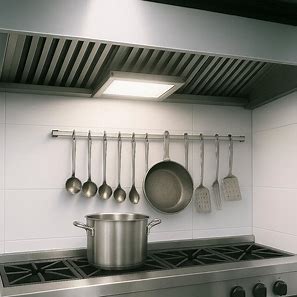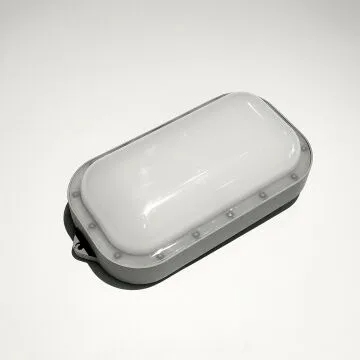5 Days a week from 8:30 am to 5:30 pm
Top Tips for Replacing Burnt-Out Range Hood Lights in Commercial Kitchens

In a bustling commercial kitchen, range hood lights do more than just brighten the space. They help cooks see clearly during busy times, keep work flowing smoothly, and ensure safety. When these lights burn out, it can slow everything down. Dark spots lead to mistakes, and poor visibility raises the chance of accidents. That’s why learning to swap them out fast and safely is key. This guide offers simple, practical tips for replacing burnt-out range hood lights in high-traffic places like restaurants or catering halls. We’ll cover every step, from getting ready to finishing up, using real kitchen know-how to make it easy. Stay with us, and you’ll handle this task like an expert, keeping your kitchen bright and running well.
Why Range Hood Lights Matter in Commercial Kitchens
Range hood lights aren’t just extras in a busy kitchen. They light up the cooking area, making it simpler to check food and avoid burns or spills. In a fast-moving setting, good lighting cuts down on errors and speeds up work. Picture a dinner rush—chefs need a clear view to serve dishes right and spot dangers. Without steady lights, shadows take over, and that can cause problems.
Common Reasons Lights Burn Out
Lights fail for a few main reasons in these busy spots. Heat from stoves builds up, wearing out bulbs over time. Grease and steam stick to fixtures, blocking light and sometimes causing shorts. Power spikes from old wiring hit hard too. In commercial kitchens, where hoods run for long stretches, this happens more often than at home. Noticing early signs like flickering lets you act before the lights go out completely.
Burnt-out lights don’t just dim the room. They might hint at bigger troubles, like bad wiring or weak airflow. Ignoring them could lead to safety checks failing. So, quick fixes keep things legal and secure.
Impact on Kitchen Operations
A dark hood throws off the rhythm. Cooks struggle to see, slowing down prep work. It annoys the team and can even affect food safety—hard to tell if something’s cooked enough in dim light. Guests notice too; a well-lit kitchen builds trust in cleanliness. Swapping lights fast reduces delays, letting your crew focus on cooking great meals.
Getting Ready for the Replacement
Before you start, gather your supplies. This step saves time and avoids frustration. In a commercial kitchen, where every second counts, being ready means less disruption to service.
Tools and Materials You’ll Need
Have these items close by:
- Screwdrivers (Phillips and flathead for different hood designs)
- New bulbs that match the old ones in power and fit
- Gloves to handle hot or oily parts
- A sturdy ladder or step stool for high access
- Multimeter to check electricity if needed
Don’t skip safety gear like goggles. For bulbs, pick ones built for high heat—commercial hoods get steamy fast.
Here’s a quick look at common bulb types:
|
Bulb Type |
Best For |
Lifespan |
|
Halogen |
Bright, focused glow |
1-2 years |
|
LED |
Energy-saving, cool-running |
3-5 years |
|
Incandescent |
Basic, cheap option |
6-12 months |
Choose based on your hood’s setup. LEDs work great in busy kitchens since they last longer and use less power.
Safety First: Key Precautions
Safety beats speed every time. Turn off power at the breaker—don’t trust the hood switch alone. It stops shocks in wet areas. Let the hood cool if it’s been on; hot metal can burn skin fast.
Wear shoes with good grip on slippery floors. If the hood’s high up, use a solid ladder with someone to hold it. In commercial spaces, follow safety rules: mark the breaker to avoid accidental turns. Watch for gas lines nearby too. These steps make the job safe and quick.
Open a door or window too. It clears out any lingering fumes.
Step-by-Step Guide to Replacing the Lights

Now, let’s get to work. Follow these steps, and you’ll have new lights in less than 30 minutes. We’ve split it up for clarity, focusing on commercial hoods with several bulbs.
Step 1: Power Down and Access the Hood
Switch off the breaker. Make sure there’s no power with a multimeter or by testing the switch. Take out filters or covers—they usually pop out or unscrew easily. In commercial models, these might be heavier, so ask for help if needed.
Wipe off grease buildup. It makes handling parts easier and safer. A clean surface also helps new lights last longer.
Step 2: Remove the Old Bulb
Gently twist or pull the burnt-out bulb. If it’s stuck from grime, use pliers with a cloth to avoid breaking glass. Take a quick photo of the bulb type if you’re unsure.
Check the socket for damage. Rust or loose wires? Fix those first to avoid repeats. In high-use kitchens, sockets wear out from constant heat cycles.
Step 3: Install the New Bulb
Match the new bulb exactly. Screw or push it in firmly but not too hard—over-tightening cracks the base. For LEDs, check polarity if wired.
Test it before closing up. Turn power back on briefly. Light works? Perfect. No? Check connections or try another bulb.
Step 4: Reassemble and Final Checks
Put covers and filters back in place. Tighten everything well. Run the hood on all settings to spot any issues. Listen for strange sounds—could mean loose parts.
Write down the change in your maintenance log. It helps track patterns and plan future swaps.
Avoiding Common Mistakes
Even pros mess up sometimes. Here’s what to watch for in commercial settings.
Picking the Wrong Bulb
Using the wrong bulbs causes fast failures or fires. Always check voltage and heat rating. Commercial hoods often need 120V or more.
Skipping Safety Checks
Rushing without cutting power? Big risk. Shocks happen quick in damp kitchens. Don’t ignore worn sockets—they can spark.
Overlooking Maintenance
Just swapping isn’t enough. Clean hoods weekly to cut grease. It extends light life and improves air quality.
Quick fixes to try:
- Dim lights? Wipe lenses first—might not need a new bulb.
- Frequent burnouts? Switch to LEDs for toughness.
- Wiring problems? Call an electrician; don’t try complex fixes yourself.
These tips stop small issues from growing.
Long-Term Maintenance for Lasting Performance
Swapping is one thing; keeping lights strong is another. In commercial kitchens, regular care pays off big.
Regular Cleaning Routines
Wipe fixtures weekly with mild soap. Skip harsh cleaners—they harm finishes. Clean filters monthly to reduce grease on lights.
Scheduling Inspections
Check lights during quiet shifts. Look for flickers or hot spots. Yearly pro checks catch hidden problems like duct buildup.
Upgrading for Efficiency
Think about switching to energy-saving options. They lower costs and run cooler, easing strain on the system. In busy spots, this means fewer swaps overall.
Good upkeep builds your kitchen’s reputation. Clean, bright spaces attract skilled workers and impress inspectors. It shows you care about details, lifting your brand as a dependable operator.
Introducing Foshan Simple Technology Co.Ltd as a Range Hood Lights Supplier
When you need reliable range hood lights for commercial kitchens, Foshan Simple Technology Co.Ltd stands out. With over 15 years in the field, this company specializes in tough kitchen products like grease filters, adjustable legs, and especially range hood lights. They focus on sturdy designs that handle tough conditions, offering custom orders for specific needs. Their solid supply chain ensures timely delivery and good prices, making them a top choice for kitchens around the world. Dedicated to quality and support, they help keep your operations bright and smooth.
Conclusion
Replacing burnt-out range hood lights quickly and safely keeps your commercial kitchen on track. By using these top tips, you cut downtime, boost safety, and maintain top performance. It’s more than fixing a bulb—it’s protecting your team and business. Stay proactive, and your kitchen will stay bright.
FAQs
Q: What are the top tips for replacing burnt-out range hood lights in a commercial kitchen?
A: Start by turning off power, get tools like screwdrivers and matching bulbs, take out old ones carefully, put in new ones, and test. Always put safety first to do it fast and without trouble.
Q: How can I replace burnt-out range hood lights quickly without stopping service?
A: Prep during slow times, keep spares handy, and follow a clear process. This way, you swap them in minutes, keeping the kitchen moving.

